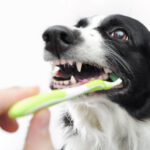Oral Health Evaluation
Oral health is an important part of your pet’s overall health. During an oral health evaluation, your veterinarian or veterinary technician will examine your pet’s mouth for signs of tartar, gingival disease, and tooth decay. They may also take radiographs (x-rays) to get a better look at the teeth below the gum line. If any teeth are found to be diseased or damaged, they may need to be extracted. The veterinarian or technician will also look for any buildup of calculus (tartar) on the teeth. If present, this can be removed with a professional cleaning. Finally, they will discuss with you the importance of at-home dental care, such as brushing with fluoride toothpaste and providing chew toys to help reduce plaque and calculus buildup.
The risk of periodontal disease
Periodontal disease is a condition that affects the gums and teeth. It is caused by plaque, which is a build-up of bacteria and food particles on the teeth and gums. Plaque can form from eating bad foods or drinking lots of sugary drinks, smoking, or using other harmful substances. Periodontal disease can progress if left untreated and can lead to tooth loss. There are several ways to prevent periodontal disease: regular dental check-ups, use of dental floss and toothbrush, cleaning of teeth and gums with a toothpaste specially formulated for this purpose, and regular veterinary care.
What Preoperative Examinations or Tests Are Needed?
There are a number of tests that must be completed before a dental procedure, such as general anesthesia or anesthesia. The veterinarian should perform any necessary blood tests and a work-up to ensure the patient is safe for surgery. Other examinations may include a physical examination, to look for signs of kidney disease or other health issues.
What is Dental Prophylaxis ( also known as teeth cleaning)?
A dental prophylaxis is a practice of taking preventive measures to keep your teeth healthy. Plaque and tartar are the two main causes of dental problems, so regular teeth cleaning and plaque removal with dental prophylaxis can help to prevent them.
Dental prophylaxis may include a variety of treatments, such as fluoride toothpaste, tooth brushing with an appropriate dentifrice, and the use of mouthwash with antimicrobial properties.

Basic dental prophylaxis
Dental prophylaxis, also known as basic dental cleaning and polishing, is a preventive dental care procedure performed in both human and animal dentistry practices. The goal of prophylaxis is to remove plaque and calculus from teeth surfaces in order to prevent cavities, gingivitis, and other periodontal diseases.
A routine dental prophylaxis appointment usually starts with an oral examination, during which the dentist or veterinarian will chart any areas of the mouth that are affected by plaque or calculus. Next, the teeth are cleaned and polished. Finally, a radiograph may be taken to check for any hidden cavities or problems below the gum line.
Why does a dental cleaning have to be done under anesthesia?
There are several reasons why a dental cleaning may need to be done under anesthesia. First, during an oral examination, your dentist or hygienist will use a periodontal probe to measure the depth of any pockets around your teeth. They will also look for any sign of bone loss. Dental radiographs (x-rays) may also be taken to get a more detailed look at your teeth and gums. If any of these measurements indicate that you have periodontal disease, a cleaning done under anesthesia may be recommended. This is because anesthesia will help to minimize any discomfort you may feel during the procedure and allow your dentist or hygienist to thoroughly clean your teeth without having to worry about you moving around.
Performing dental prophylaxis
A dental prophylaxis is a dental procedure that involves the examination and cleaning of the teeth. Plaque and calculus are removed from the teeth, and dental treatment is provided to prevent malocclusion, gingivitis, and periodontal disease. Enamel is also protected during dental prophylaxis.
Dog dental prophylaxis: Is it safe to use anesthesia?
Anesthesia is necessary for dental prophylaxis in dogs, as it is for any other type of dental procedure. However, anesthesia comes with some risks, so it’s important to talk to your veterinarian about the potential risks and benefits before deciding whether or not to proceed with dental prophylaxis. X-rays may also be necessary to assess the health of your dog’s teeth and gums before proceeding with dental prophylaxis.
Does my pet have to stay overnight after the dental procedure?
No, your pet does not have to stay overnight after the dental procedure. However, if your pet is having a routine dental or dental treatment that requires anesthesia, they will need to stay at the hospital for a few hours after the procedure so we can monitor them.








